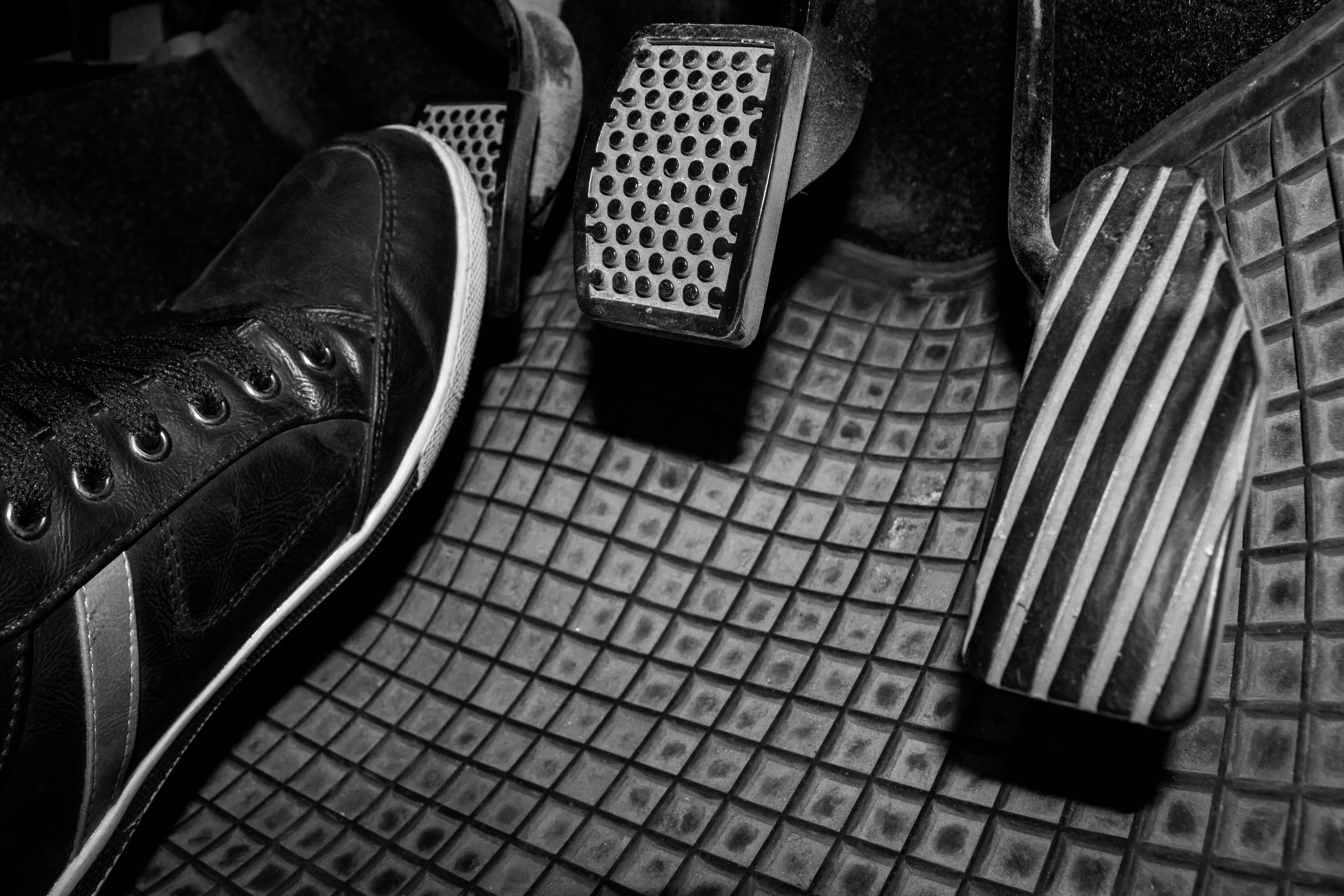Preparation
Fully depress the clutch and select first gear (if you're on a steep downward hill, select second) and apply the accelerator - usually to the thickness of a £1 coin. The engine should start to rev slightly. If your car has a rev counter, for most cars it should read between 1 and 1 and a half.

Now bring the clutch up slowly to the biting point - the point where you can feel a tug at the front of the car. When you feel the tug, you should keep your left foot still on the clutch and continue to hold your right foot on the accelerator.
Now the car is ready to move off, but you still have your handbrake applied, locking the two back wheels in position.
Observation
You should perform a 360-check, also known as a 6-point check, starting from the left and ending looking over your right shoulder (if you're moving away from the left hand side of the road). It should be the other way round if moving off from the right.
Once you have performed the relevant shoulder check and you are happy and sure that it's safe to go, you should release the handbrake.
Manoeuvre
Once the handbrake has been released, you'll need to gradually increase the accelerator while bringing the clutch up slowly at the same time. It's important that these two pedals are co-ordinated together.
If you're moving away from the left hand side of the road, you'll need to steer slightly right as the car begins to move forwards so the car moves away from the kerb. You should continue to move right until the gap between the white lines and your car is the same on both sides. Use your door mirrors to judge this.
Do you keep stalling?
If you keep stalling, it's probably because you're not operating the clutch properly. If you're in a petrol car, you'll need more acceleration to the point where you can hear the car's engine revving before finding the biting point. If you try to find the biting point before applying the accelerator, the chances of you stalling the car increase. The accelerator should always be set first.
Sometimes as the car starts to move, learner drivers often release the clutch too quickly, resulting in a stall. Just as the car starts to move, ease the clutch pedal up slowly over the period of three seconds, and don't forget to set the accelerator.